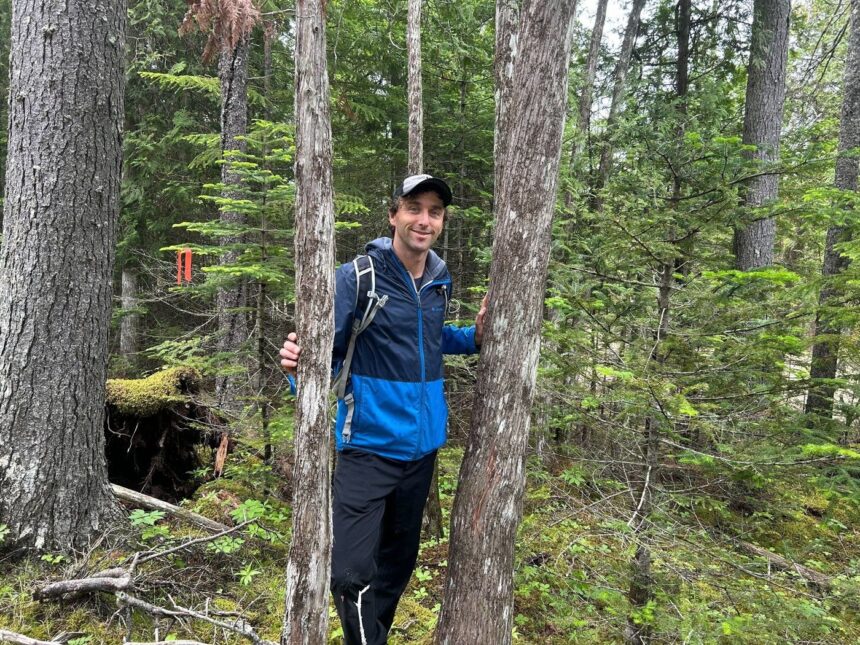Article – The fight for Saint John’s last urban old-growth forest has reached a critical junction, pitting economic development against what environmentalists call irreplaceable natural heritage.
For generations, the 890 hectares of pristine forest near Loch Lomond has flourished undisturbed, housing rare plant species and providing crucial habitat for endangered wildlife. Now, city officials have earmarked approximately 40% of this ecological treasure for conversion into an industrial park—a decision that has ignited fierce community resistance.
“What’s at stake here isn’t just trees but an intact ecosystem that’s been functioning for over 300 years,” explains Dr. Martha Yacoub, forest ecologist at the University of New Brunswick. “This particular forest contains red spruce specimens dating back to before European settlement. Once it’s gone, we can’t recreate it—not in our lifetimes, not in our grandchildren’s lifetimes.”
The city’s economic development department presents a different perspective. According to their impact assessment, the industrial park could generate upwards of 650 jobs and add approximately $21 million annually to Saint John’s economy. The proposed development comes as the region struggles with population decline and unemployment rates higher than the national average.
Local councillor Thomas Whelan maintains the city has struck a reasonable compromise. “We’re preserving 60% of the forest while creating desperately needed economic opportunities for our residents. Many families here are making difficult choices between heating their homes and putting food on the table.”
This pragmatic approach hasn’t satisfied the coalition of environmental groups that formed to protect the entire forest. Their petition has gathered over 8,500 signatures—nearly 10% of Saint John’s population—since launching three weeks ago.
The controversy deepened yesterday when documents obtained through freedom of information requests revealed that the environmental impact assessment commissioned by the city failed to identify seventeen rare plant species documented in previous independent surveys.
“They’re working with incomplete information,” charges Rebecca Sullivan from the Acadian Conservation Network. “This isn’t just any forest—it’s one of the last intact old-growth forests in an urban setting in all of Atlantic Canada.”
What makes the forest particularly valuable, according to biologists, is its unbroken continuity. Unlike replanted forests, old-growth ecosystems develop complex relationships between species over centuries. The forest hosts the endangered Canada warbler and provides critical habitat for several bat species already threatened by white-nose syndrome.
The province’s Department of Environment and Climate Change has now entered the fray. In a letter to Saint John’s mayor, the department referenced New Brunswick’s commitment under the 2023 Nature Agreement with the federal government to protect 30% of the province’s land and water by 2030.
“Destroying old-growth forest directly contradicts our legal obligations,” notes Environmental Law Alliance spokesperson James Peterson. “The city could find itself in a costly legal battle if it proceeds without proper provincial permits.”
The city maintains that its environmental consultants have identified sufficient mitigation measures, including the creation of wildlife corridors and the preservation of wetland areas within the development zone. But critics argue these measures address symptoms rather than the core problem—the fundamental loss of the forest itself.
Adding fuel to the debate, the Conservation Council of New Brunswick released economic analysis suggesting the forest’s value for carbon sequestration, water filtration, and tourism could exceed $15 million over the next decade if left intact and properly managed as a nature preserve.
“We don’t oppose economic development,” clarifies Sullivan. “We oppose short-sighted development that trades irreplaceable natural assets for temporary economic gain. There are dozens of brownfield sites throughout the region better suited for industrial development.”
The industrial park proposal requires final approval from both the city council and provincial regulators before construction can begin. A crucial vote is scheduled for July 12th, but councillors report unprecedented public engagement, with hundreds of residents attending town halls and information sessions.
Local Indigenous leaders have also joined the conversation. Wolastoqey Nation Grand Chief Patricia Bernard emphasized the cultural significance of the forest. “These lands hold traditional medicines and spiritual value for our people. Industry comes and goes, but our connection to these forests spans thousands of years.”
As Saint John weighs its options, the debate reflects broader tensions facing many Canadian communities—how to balance immediate economic needs with long-term environmental stewardship. The forest’s fate may ultimately hinge on whether residents and decision-makers view the land through the lens of quarterly economic reports or generational ecological value.
For now, the forest stands as it has for centuries, while the community that surrounds it grapples with decisions that will define not just its economic future but its environmental legacy.






